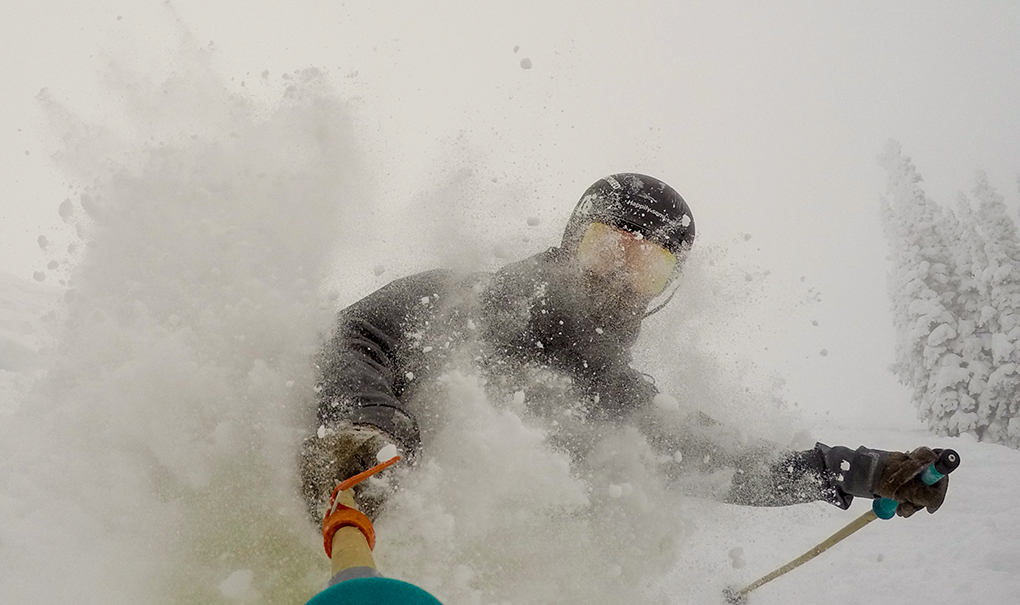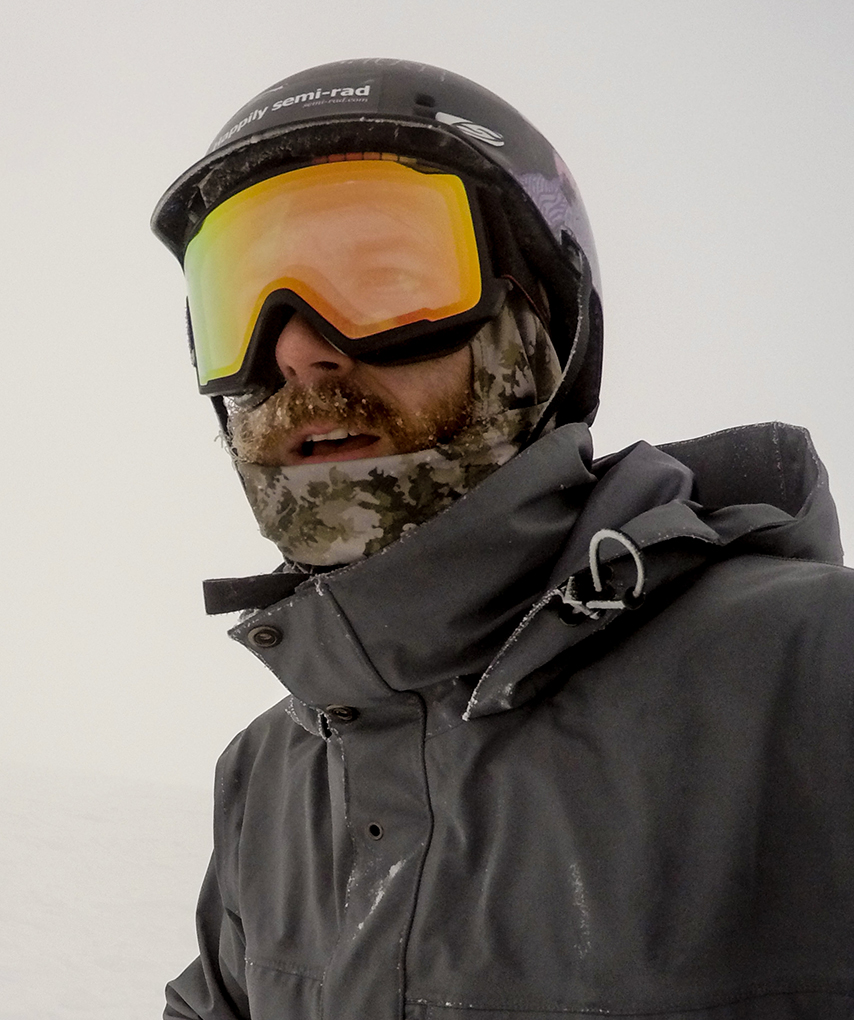Fit and Helmet Compatibility
Cylindrical vs. Spherical goggles are really a matter of personal choice. Cylindrical lenses curve across the face horizontally (like most classic ski goggles) but have no curve up and down. Spherical lenses curve both horizontally and vertically, like a bubble. While some companies claim that their spherical goggles offer less distorted optics than their cylindrical competitors, I have yet to notice a real world difference.
I like the way cylindrical goggles conform to my face and sync with helmets better, but if you are conflicted, I highly recommend trying these on with your helmet in a shop.
I found that they felt a hair shorter vertically than the M2. They are a touch wider and taller than the Giro Contact, and have a minimally wider field of view than the Giro Contact. The M3 is larger and offers a better field of view than the Smith Squad goggle, and is similar in both size and field of view to the Smith Scope.

I used the M3’s with both the Smith Gauge helmet, and the Giro Range MIPS helmet. They worked fine with both, although the top frame profile is a little flatter than some spherical options.
Again, if fit is a big deal to you, take your helmet into a shop and try them on, everyone’s face is different.
Optics
While some argue that spherical lenses offer a less distorted and more natural view than cylindrical ones, I’ve never been able to notice a difference. Will Brown and Jonathan Ellsworth were impressed with the M2’s excellent optics, and I’d echo those sentiments.
The Eric Pollard colorway I used comes with the bluebird Dark Smoke lens, and the variable condition Red Ice tint.
Will Brown comments on both of those in his review of the M2, and while I agree with his notes, I’ll add a few observations of my own.
The Dark Smoke tint really is dark. I got away with using it on a few greybird days, but it does best in full-on sunny conditions. It does a great job of cutting direct sunlight, reflections off the snow, and optimizing your visibility.

The Red Ice lens looks surprisingly mirrored for a low light lens, but I found that it really lets a lot of light in. It does an incredible job on the foggy days Grand Targhee is known for, and is so bright that I’ve actually found it to be a little fatiguing to use in conditions where the light is anything more than flat.
Between these two lenses, Anon covers both ends of the light spectrum very well.
[Editor’s Note: For those that typically ski with glasses under their goggles and are interested in prescription inserts, check out SportRx, which makes inserts for many popular goggle frames. We haven’t tested them yet, but are planning to review them in the near future and will post an update when we do]
Pricing
At $260 the M3 is not a cheap goggle. However, if you want the best lens retention system on the market you should be looking at the Anon M series. The M2 is slightly cheaper at $240, and if you just want the magnetic lens swap system and don’t care about the cylindrical lenses or the magnetic facemask, that should be your first choice.
The Giro Contact also costs $240, but in terms of the lens swap system it’s just not in the same league as the M2 or M3.
However, if you want what in my opinion is the best cylindrical lensed goggle on the market, the M3 is well worth the investment, and the magnetic facemask is a nice and very functional touch.
Bottom Line
To be honest, even after reading Jonathan and Will’s high praise for the Anon’s lens retention system, I wasn’t sure I bought the hype. How much of a difference could it really make?
A lot, it turns out. I’ve found myself swapping out lenses more often and far more easily than with any other goggle I’ve used. In fact, I’ll often just pull the lens out of the frame when I’m taking photos, then drop it back in without taking my goggles or helmet off.
Anon’s magnetic lens retention system is the best on the market, and on top of that, the M3 delivers sleek, cylindrical style, and excellent optics. Furthermore, with the M3, glasses wearers can now take advantage of Anon’s excellent optics and best-in-class swappable lens system.

I thought I would really enjoy these goggles better than other similar priced models from “big name” companies. I’ve had these now for just over a year (as of March 3, 2018).
Pro:
– Lens swapping is easy, just like this the author of this review states.
Con:
– Staying on after a big failed jump did not happen. The lens popped right off, landing about 1ft away from me.
– Fogging… heavy, heavy fogging. Temperatures of -10ºC and I ended up on my face more than desired due to not being able to see the contours & shadows on the slopes. It was like being socked in by the clouds, while it was sunny out.
BTW, cheap $20 UVEX goggles never fogged. They just broke after 6 yrs of use.
The problem stems from poor sealing between the inner and outer lens, allowing moisture to build up inside and then condense.
For goggles in the near $300 (CAN) range, how can this fogging be so easy to occur, in both lenses? I was under the impression that snowboarding occurs in tempertures around -10ºC.
Complete B.S.!
My buddy rode with Oakleys and zero issues.
And I thought Burton prided themselves on quality gear.
Fogging problem here also. My M3s are used with my Anon helmet, working over my glasses, in sleet conditions for the first day, no problems. I let them dry carefully, as they are a big investment. Day 2 temps dropped into the low 20s, and these goggles fogged up. Took a while to figure out the fog was in between the lenses! Never saw that problem with the M2s. Made for a difficult descent in icy conditions. I am upset over this.